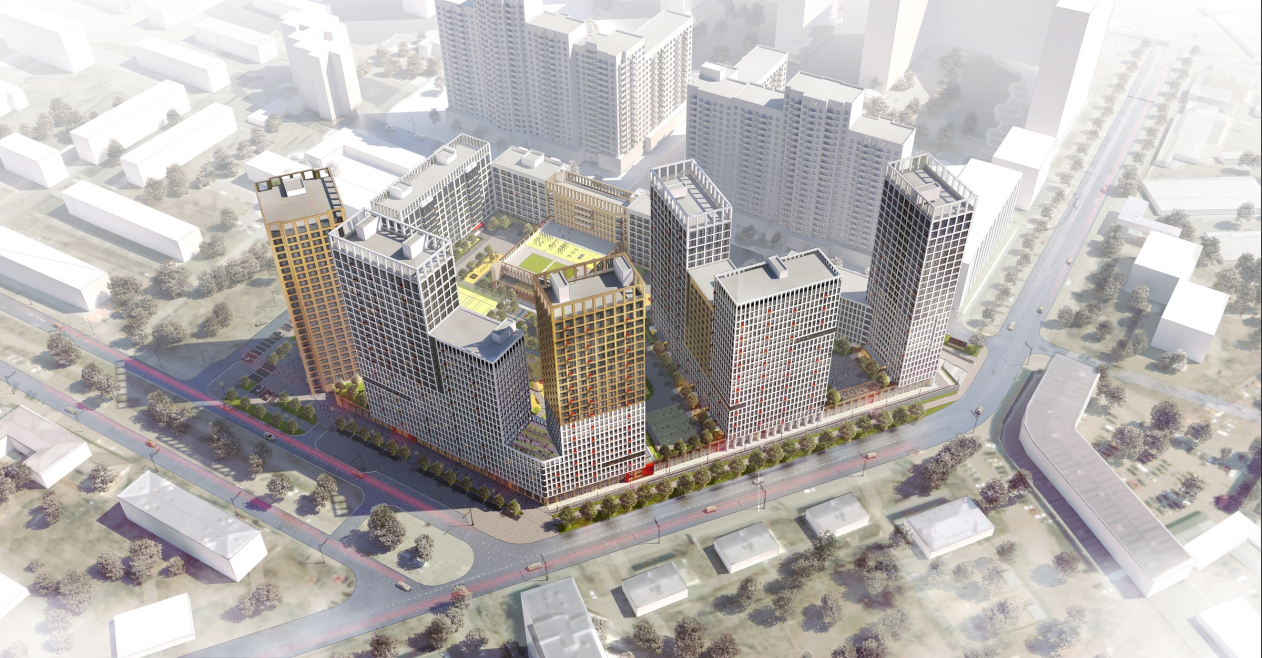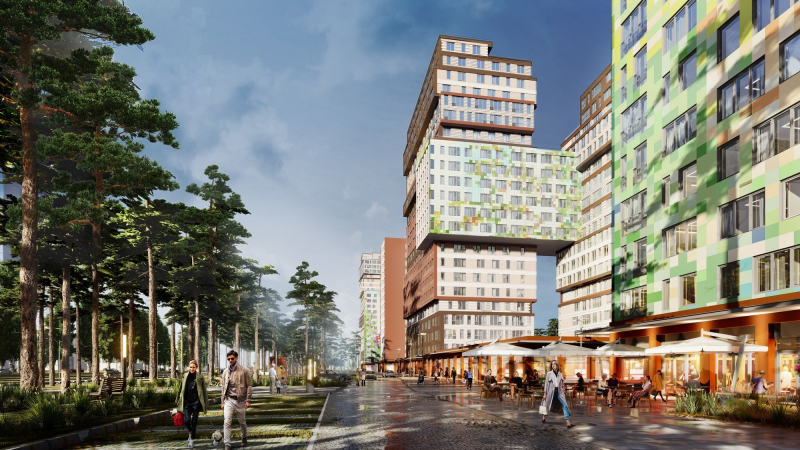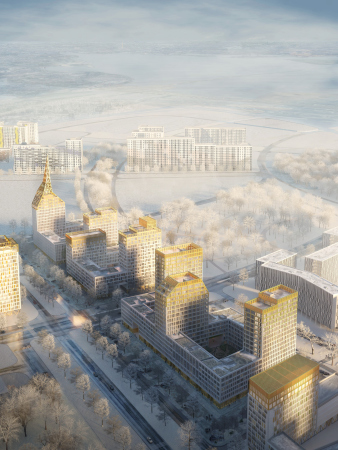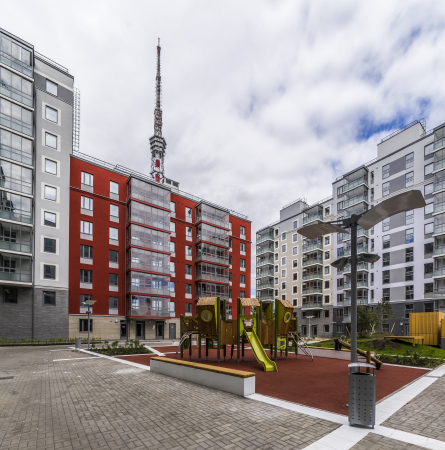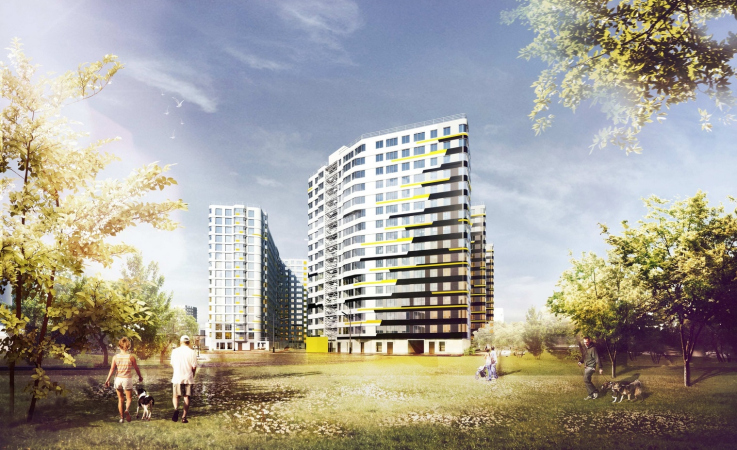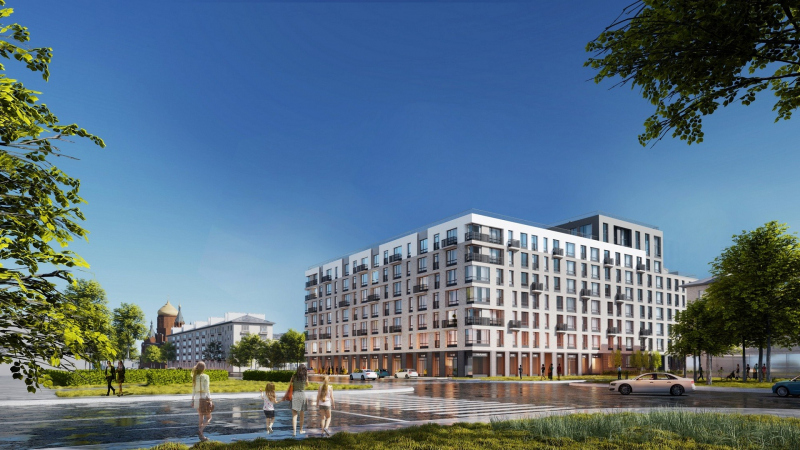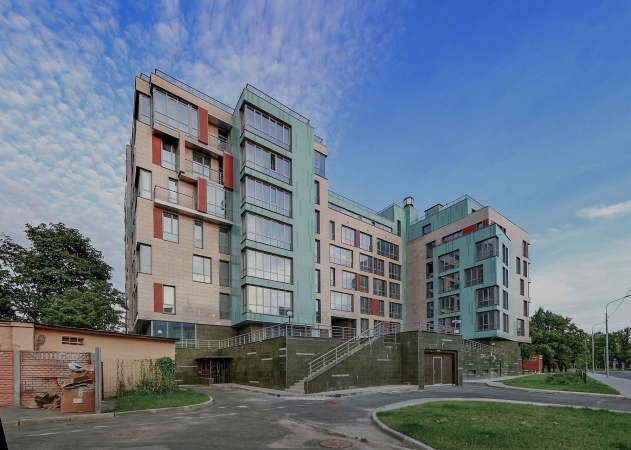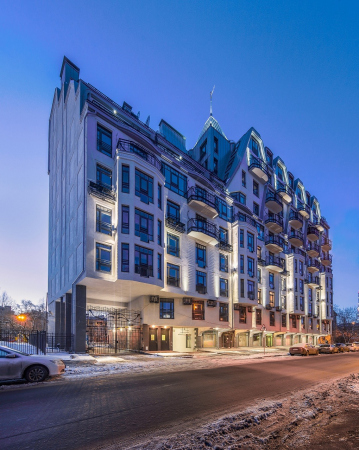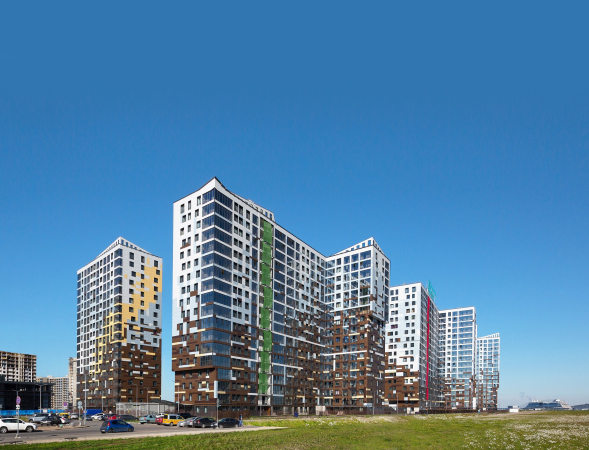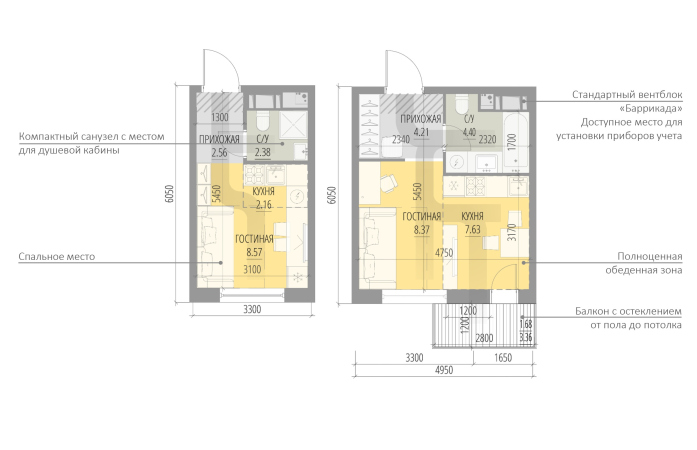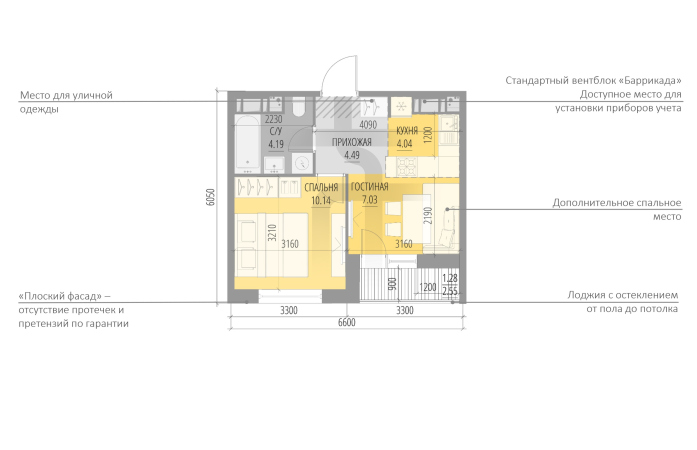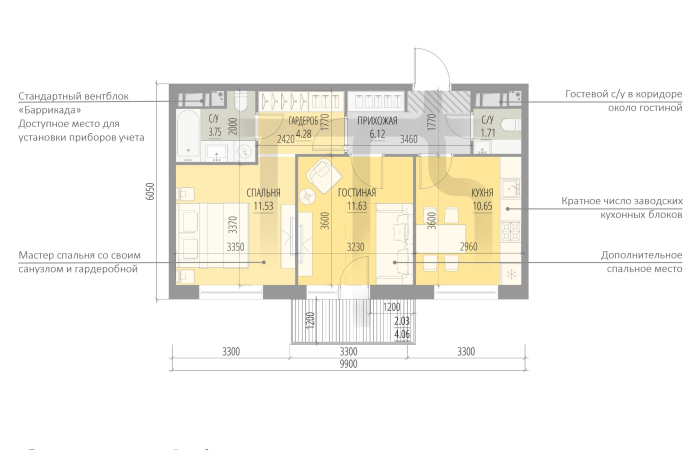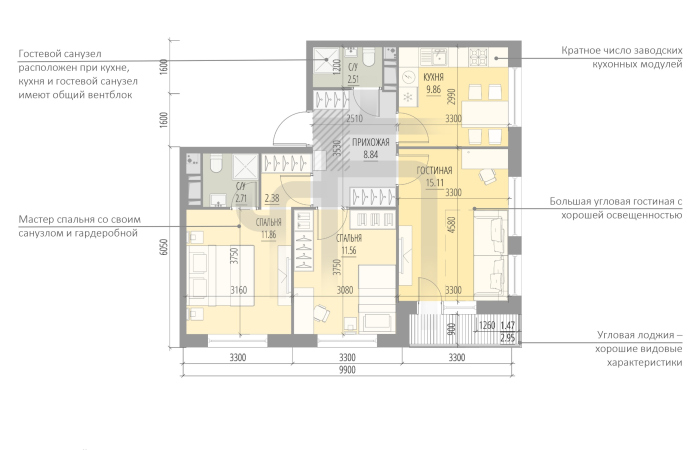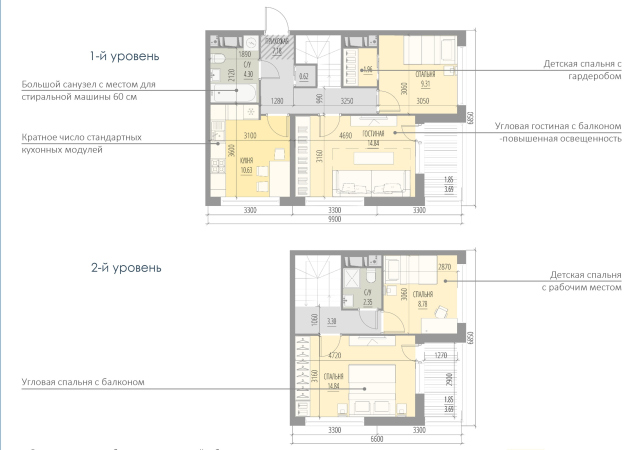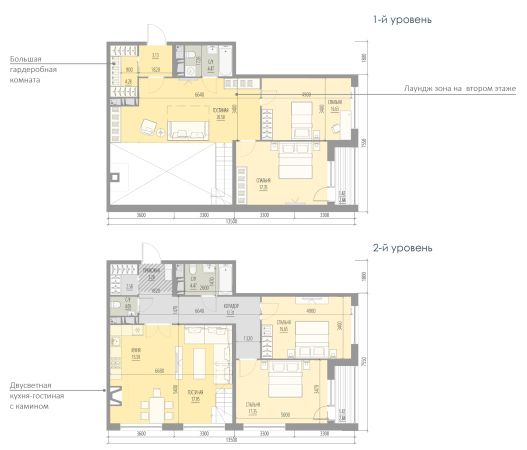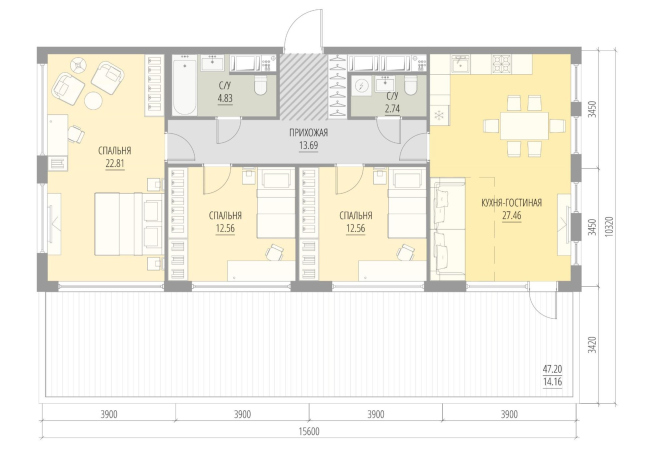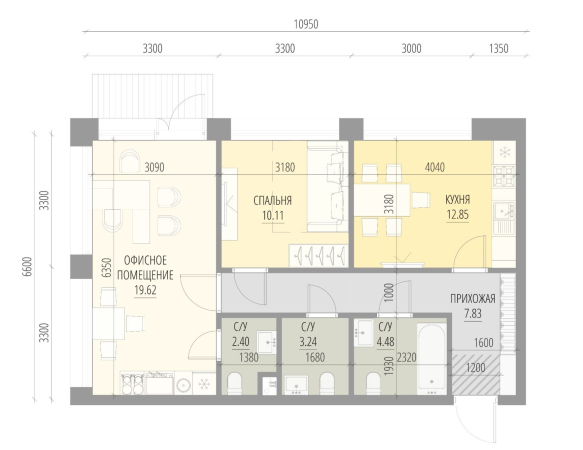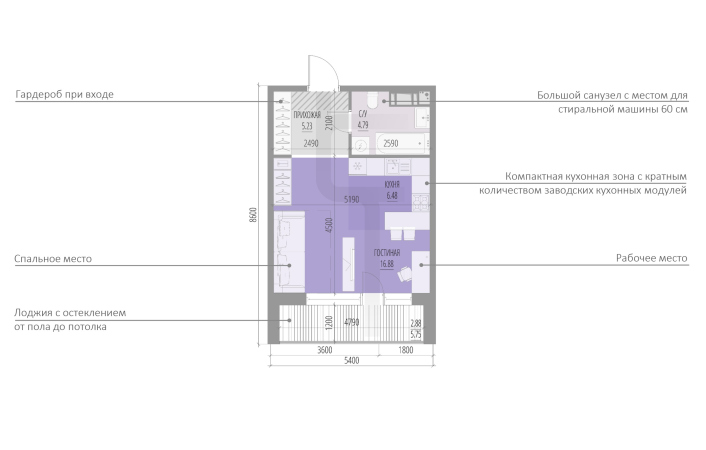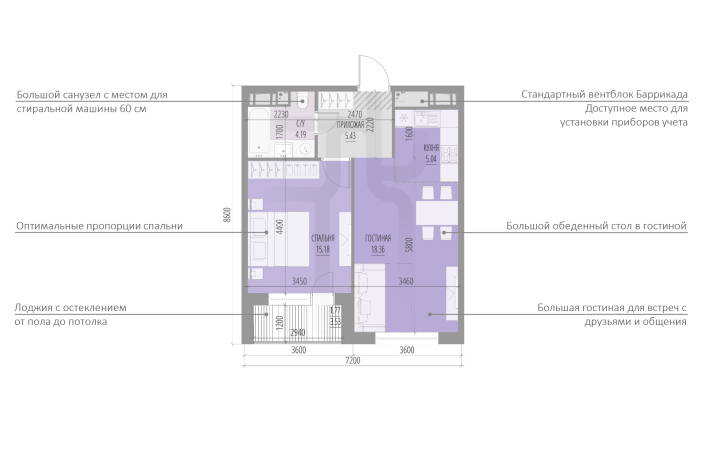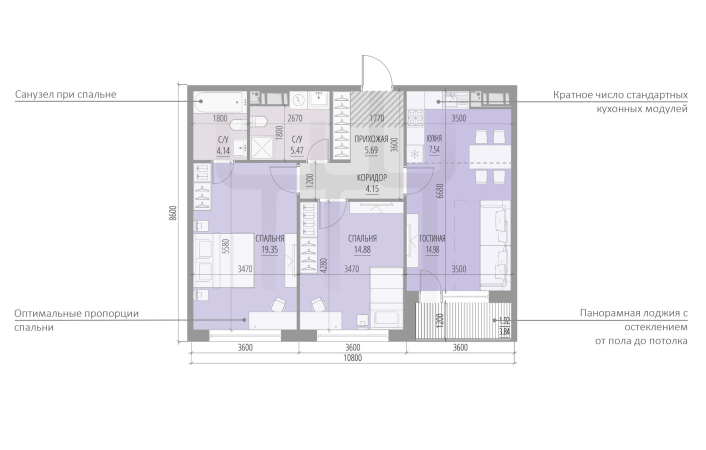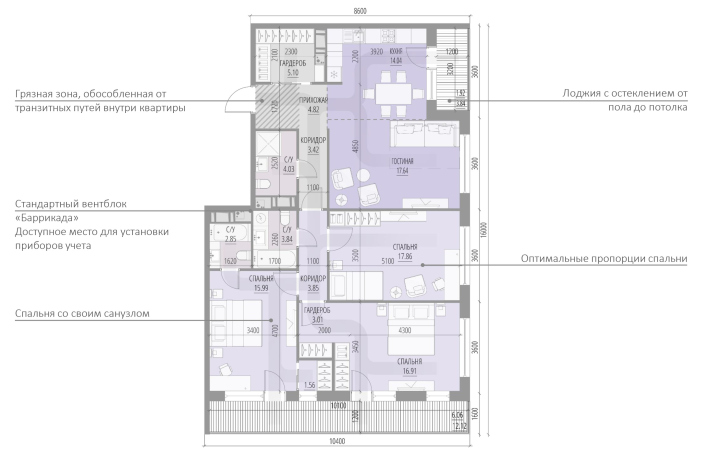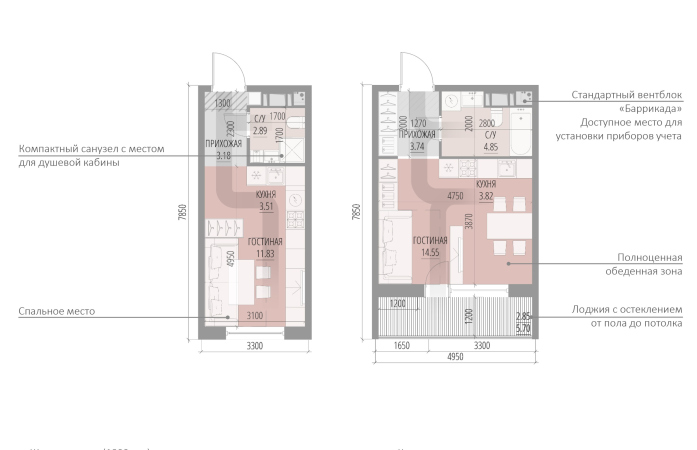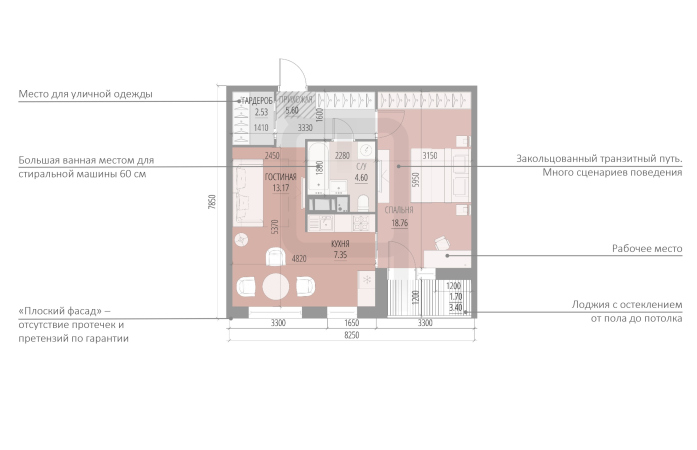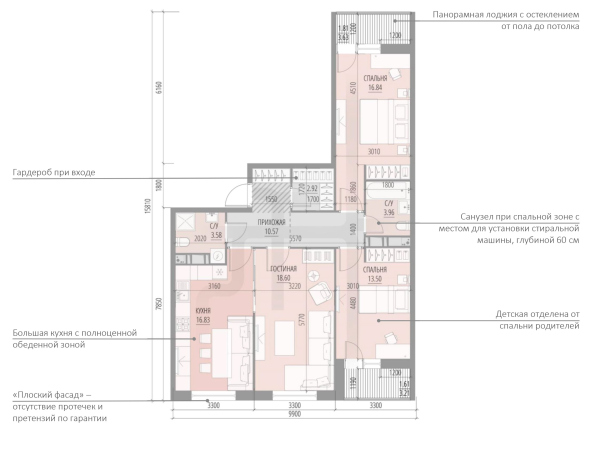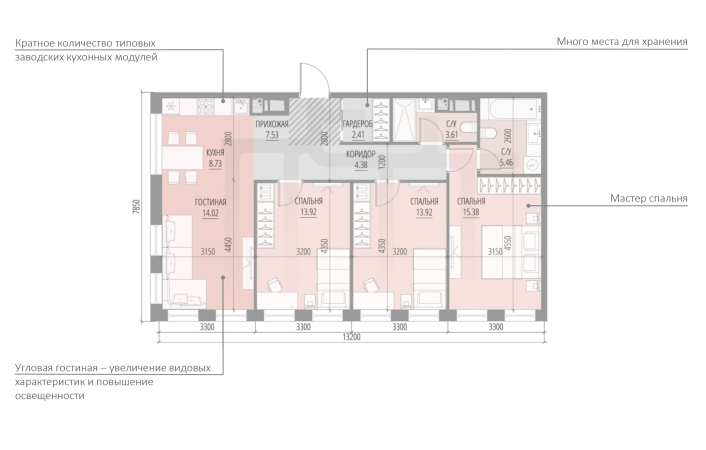Saint Petersburg’s A-Len Architectural Bureau has a division, whose name is not exactly habitual: the architectural laboratory. This division was formed in 2009 in response to the economic crisis, which significantly reduced the pace of construction and the number of contracts. The leader of the company Sergey Oreshkin decided to use the idle period to reflect on the experience accumulated over the recent decades, find new approaches to architectural design, and come up with the workload for the large staff that he did not want to dismiss. Since only housing construction was doing relatively well, the company focused specifically on this field.
This is how the program called “A.Len Perfect Apartments” came around – a knowledge base of apartment layouts that the company has been using as the basis for all of the housing projects that it designs since 2012.
“The perfect apartments” are to be found in high-end projects, such as the housing complex “Golden City” on the wash-up land of the Vasilievsky Island, and in the regions – for example, in the housing complex “Bunin”, where the layouts could be easily adjusted to fit a sophisticated stair-like structure. The program can be adapted to various classes of housing: standard, comfort, and business, as well as to mixed typologies – a vivid example here is the “Prospect Mira” compound in Ekaterinburg.
In Soviet times, such developments were provided by design research institutes; today, these things are done by large development holdings. Architectural offices, however, rarely attempt to tackle such large-scale tasks.
The program is based on a study of typologies of Soviet, modern Russian, and foreign housing, as well as the company’s experience of working with the marketing and sales departments of modern developers, as well as on error analysis.
Sergey Oreshkin notes that the source of all issues with modern apartment layouts is the absence of in-depth scientific research, for which the architectural companies have no resources, while the government is studiously ignoring the problem.
Using the example of such a simple indicator as the width of the building, which affects the depth of the apartment (counting from the window), and its square footage, one can easily trace how the planning solutions have evolved, regardless of the class of the housing construction.
When the economy was on the rise and decisions were made too quickly, the width of residential buildings could reach 27 meters – and this, considering the fact that the sunlight penetrates at best 6-6.5 meters. Besides excessively long or L-shaped dark rooms, such houses feature giant anterooms, closets, and bathrooms, for which the buyer pays exactly the same price as for a square meter of a sunlit kitchen.
As for the town planning techniques, the apartment layouts were strongly influenced by the spreading of the so-called “perimeter construction groups”, based on the idea of an isolated yard, similar to “well” yards of Saint Petersburg, only on a quite different scale. Such houses had too many apartments located in the inner corners, where it was virtually impossible to isolate neighboring apartments from one another, and the problems with echo and sound penetration turned out to be considerable.
In such corner apartments, the inner wall was longer than the outer one; there was one less window, and, hence, there was a lot less natural light. A healthy alternative would be a not-too-wide section, room proportions close to a perfect square, and the efficiency of every square meter.
Andrey Ponomarev The leader of the development division of Pervostroitel
The core of the apartment range in the “Prospect Mira” compound consists of two- and three-room apartments, rather popular with the buyers. Single-room apartments do not sell that well, but, probably, this has to do with their relatively expensive price tag. The apartments of an unusual format – for example, double-height ones, have almost been sold out, and it was them that aroused a lot of interest for the project as part of the general marketing campaign. We had a lot of requests for them. According to our observations, what is the most popular with our clients are the most functional layouts – with master bedrooms, two or more bathrooms, kitchen-living room, and storage space.
The apartments offered by A-Len are diverse and balanced enough to meet the needs of the audience. The apartments of larger formats have unique advantages: double height, panoramic glazing, and master bedrooms. These unique solutions are what makes us different from the competition and gives more possibilities to our clients.
The apartments offered by A-Len are diverse and balanced enough to meet the needs of the audience. The apartments of larger formats have unique advantages: double height, panoramic glazing, and master bedrooms. These unique solutions are what makes us different from the competition and gives more possibilities to our clients.
How the program works
The knowledge base already includes more than 5,000 successful layouts, which are grouped into four major categories: business, comfort, economy, and special-type apartments, which are not wide-spread on the market yet. The latter include such things as two-level apartments, duplexes, corner, side-end apartments, and office apartments. The business-class apartments are characterized by a wider pitch of the axis grid, bigger area, and diversity of functional zones.
The base can be used as a constructor set: the architects developed for each class of apartments room modules with the optimum area and furniture arrangement. By using them, it is possible to transform individual apartments, as well as whole floors.
Александр Андрианов, первый вице-президент Glorax Development
The residential complex Golden City, which is being built by Glorax Development on the first shoreline of the Gulf of Finland, implements several interesting planning solutions at once. The top floors have in them apartments with private terraces; in addition, the complex features two-level apartments, all of which command beautiful gulf views. Some of the buildings have solutions with a window in the bathroom or in the hall – this widens the circle for design ideas when decorating such apartments, and such property in business-class housing complexes is highly valued by the buyers. Another feature of our perfect apartments in Golden City is panoramic windows that fill the rooms with natural light and allow you to zone the space, creating dedicated spaces for relaxation, work, play, and more.
Each layout has its own identification card, understandable for both the developer and the buyer. This card displays the number of rooms, the type of suitable household, the useful floor space, and the total area of the apartment. Also, the company developed evaluation coefficients that show just how effectively the apartment floor space is used.
Coefficient K1 shows the ratio of the sum total of the areas of residential rooms, the kitchen, and the living room, to the overall area of the apartment. It accurately indicates errors in the design methodology with a significant increase in the area of corridors and other auxiliary rooms. The optimum coefficient is 0.6-0.75
Coefficient K2 is the ratio between the overall area of the apartment to the overall area of the outside façade wall, which reflects the natural insolation of the apartment. The optimum coefficient is 2.1-2.35
Sergey Oreshkin, «A-Len»
Today, the architects of our company start their work not from a sketch or a master plan, but from taking the program, previously getting from the client a package of different tasks, one of them being the range of apartments.
This program helped us to significantly streamline the architect-developer relationship: the client, as a rule, at once accepts the layouts that we propose, which gives us an opportunity to safely work on the facades. The painfully inefficient procedure that consists of getting endless approvals from the sales department that knows very little about ergonomics, has now become pleasantly routine. When an architect works under pressure, he is very likely to deliver poor results. Today, we and developer are on the same page – they know what we are doing and they profit from getting no problem apartments. This ideology helps us sell.
This program helped us to significantly streamline the architect-developer relationship: the client, as a rule, at once accepts the layouts that we propose, which gives us an opportunity to safely work on the facades. The painfully inefficient procedure that consists of getting endless approvals from the sales department that knows very little about ergonomics, has now become pleasantly routine. When an architect works under pressure, he is very likely to deliver poor results. Today, we and developer are on the same page – they know what we are doing and they profit from getting no problem apartments. This ideology helps us sell.
Integration and development
The A-Len Architectural Laboratory also has other branches: Brickwork (dedicated to restoring the old techniques of laying bricks), the color laboratory, architectural marketing, and animated graphics. So far, the “Perfect Apartments” are only compatible with the Architectural Tool Kit software, because the typology of the apartments can be significantly widened by using various façade systems, and because each solution – be that a window reaching to the floor or a French balcony – entails the necessity of solving engineering and constructive tasks. In 2018, the program was patented, but it is constantly improved, and, possibly, will be automated in the future.

